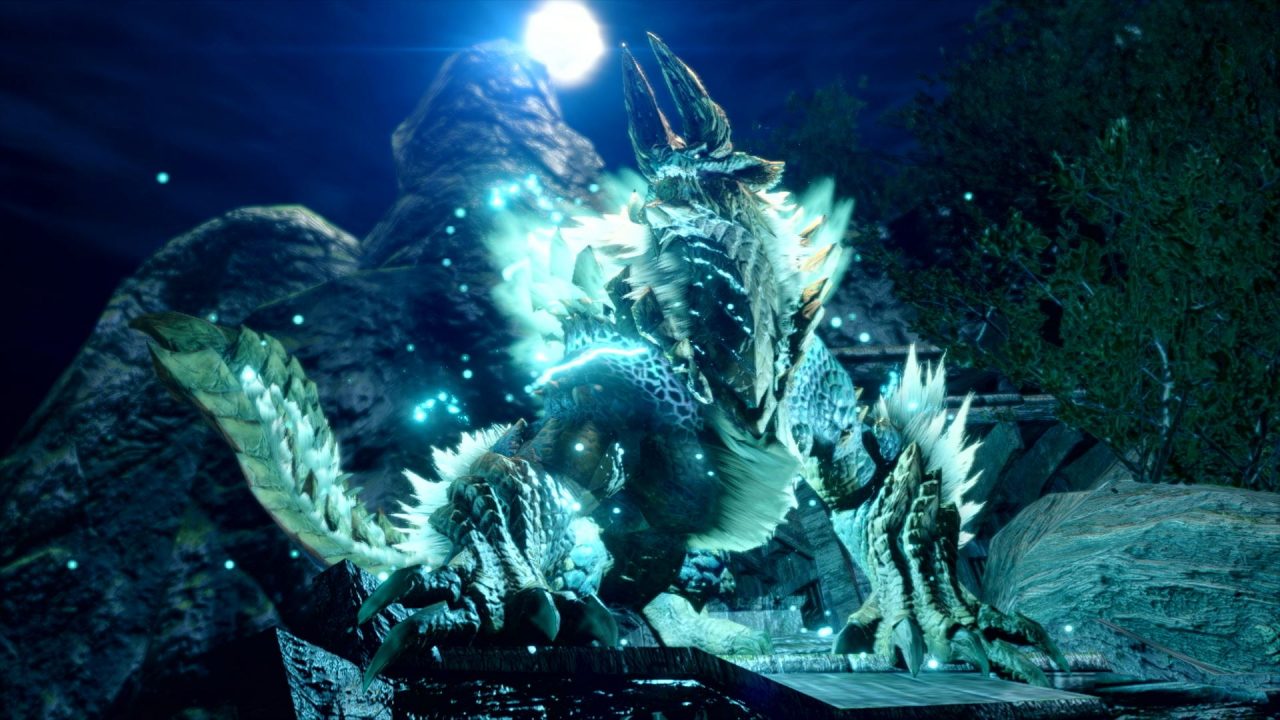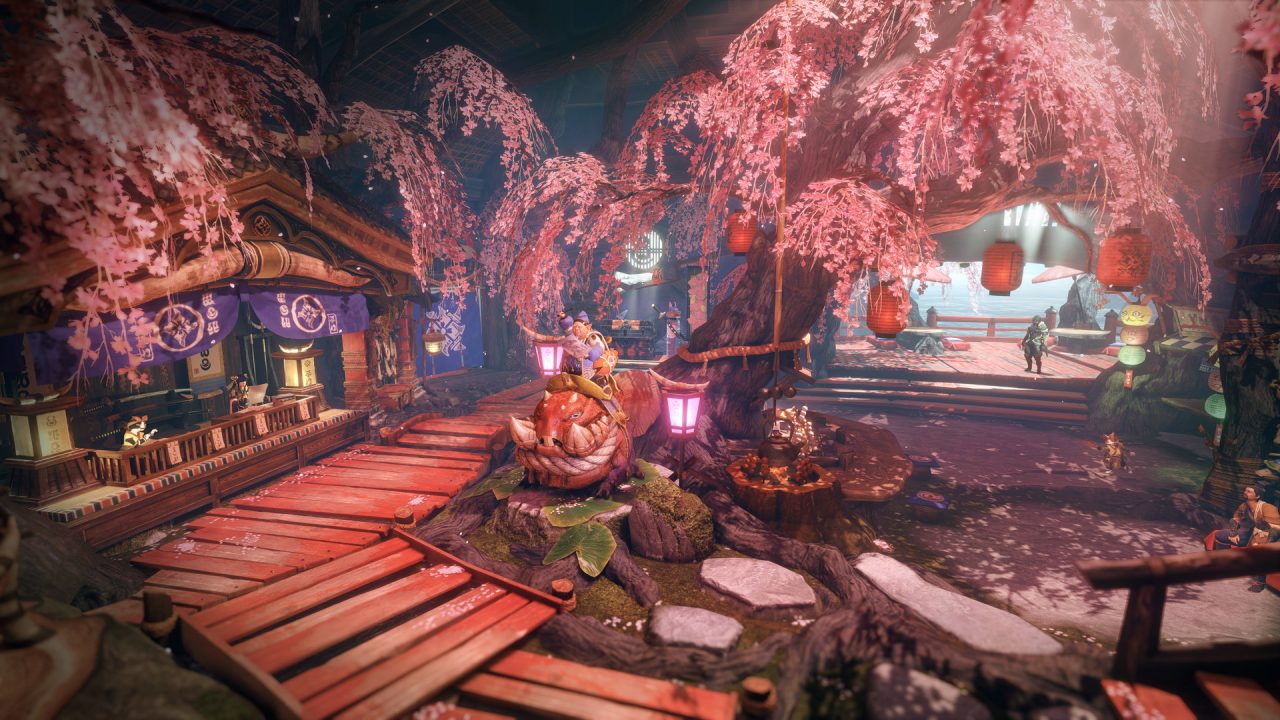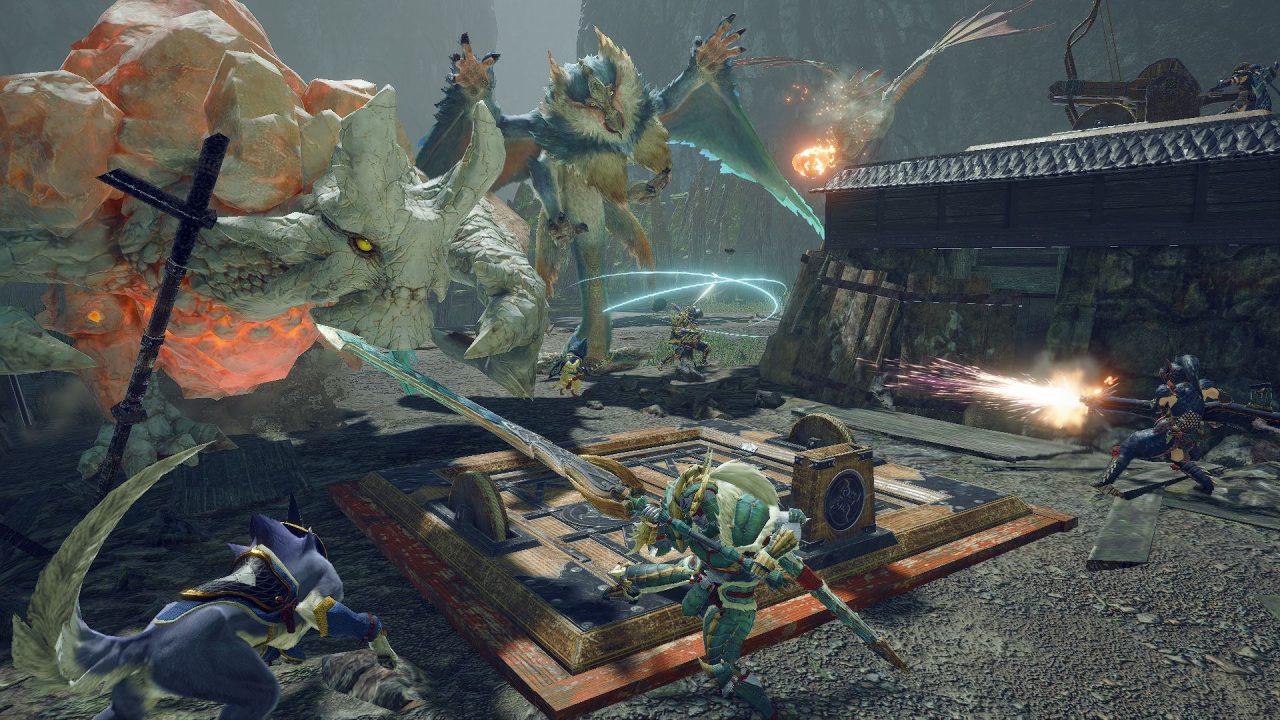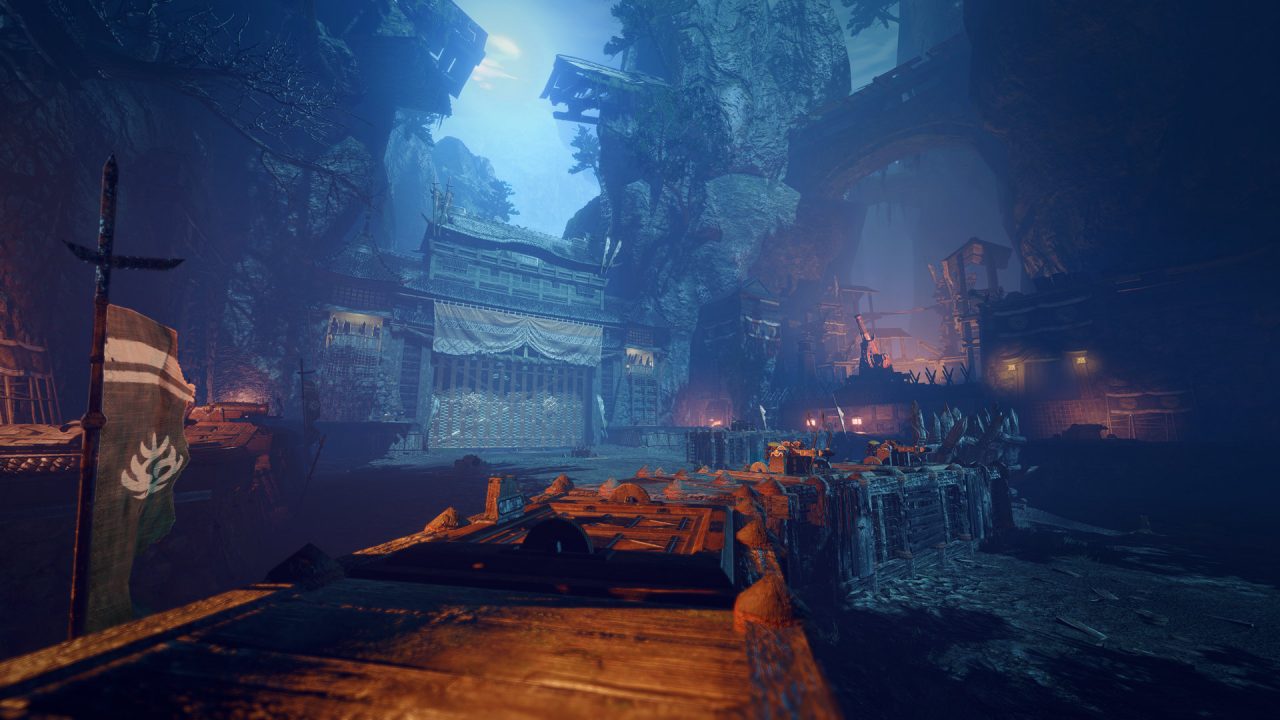Over the past 15 years, I’ve put thousands of hours into the Monster Hunter series. Each entry has had its quirks or obtuse elements, yet with each new installment, the games have become easier and easier to get into. As Monster Hunter World took the gaming sphere by storm, I was delighted to see one of my favorite series finally find purchase with my friend groups, coworkers, and even just the general gaming public. It’s a great feeling to have people finally click with the series, and it’s even better when they dip their toe in for the first time. With the arrival of Monster Hunter Rise, it’s easier than ever to get into the series. For long-time fans like myself, Rise is a great addition to the franchise that adds in even more quality-of-life improvements while helping to evolve this long-running series with a bevy of new additions.
Monster Hunter Rise was developed alongside its predecessor Monster Hunter World. Due to this, many of World’s improvements and changes are also present here. Gone are the days of paintballing monsters, carrying breakable pickaxes, and stopping to chug a potion. True to the fifth generation of Monster Hunter games, Rise keeps everything that smoothed out the hunting experience while shedding some of the more irritating or bloated elements of earlier generations. Rise does, however, take it a step further when it comes to quality-of-life changes. Small touches, such as gathering being performed in one swing rather than multiple, or the monster being shown on the map from the start of a hunt indicate that Capcom has taken feedback from new players to heart. While veterans like myself could go on for hours about having to craft pickaxes in the field or lament playing hide and seek with monsters known to flee, these changes feel like a benefit for all fans regardless of their tenure.
To put it simply, Monster Hunter Rise is the perfect place to start for anyone with even a small interest in the series. The introduction of the Wirebug — a small bug that players can tether to, alongside myriad other actions — drastically increases mobility and adds layers of depth to all fourteen weapons. Heavy weapons now have plenty of escape and traversal options alongside new attacks, counters, and special movies. Light weapons now feel like they hit even harder and have far more defensive options available to them than ever before. Ranged weapons gain an array of offensive, defense, and evasive maneuvers that were never thought possible, thanks to the friendly little Wirebug.
Many weapons also feel fully realized, if not perfect, with the addition of Switch Skills and Silkbind moves alongside the Wirebug. Swapping out attacks for ones that better fit your style, as well as having counterattacks baked into your Wirebug moveset, elevate both the skill floor and skill ceiling of the game’s 14 weapon types. These additions feel like an attempt to modernize Monster Hunter as well as accelerate combat in general. Fortunately, it succeeds on both fronts, and I can only hope the Wirebug becomes a staple of the series moving forward.
The Wirebug not only increases combat options dramatically, it also opens up new avenues of traversal across these large and luscious biomes. Being able to simply aim a reticle and slingshot yourself at will is appreciated, yet having the ability to run up and along walls adds a level of verticality to the series only briefly touched upon in World. As I played around with the Wirebug and tried to get comfortable with all these new options, I realized I’d need to rethink how I interact with Monster Hunter maps. What once were just elevated areas that acted as set dressing complete with invisible walls are now opened up as actual surfaces to climb up and along. The developers highly encourage exploration as there are dozens of bonuses to be found off the beaten path. Plenty of gathering points, buffs, and secret items lie all over the map on high ledges, across large gaps, and even within the caverns deep below. With exploration being so prominent in Rise, players are rewarded for exploring every nook and cranny. A few moments spent chasing down helpful Spiribirds to gain attack and defense buffs can be the difference between success and failure in battle.

The maps that you explore and battle in are equal to World, if not better in some cases. While the level of foliage, shadows, and lighting feel like a step down from the previous game, the general map design is more straightforward and far easier to navigate. Not a single zone feels pointless or overdesigned. Being able to roam through bamboo forests, jump over obstacles, and climb walls is certainly a boon, yet the real star of the show is the trusty canine companion — the Palamute. These allies allow the player to ride across the map at high speeds, drift around corners, run up walls, and even perform actions while mobile, such as healing or sharpening weapons. Gathering materials from monsters, bonepiles, and ore outcrops is possible as well, making the Palamutes a wonderful addition to the series. When not serving as your means of transportation, the Palamute can join you in battle with its own collection of weapons and tools. Within a single battle, they’ll prove themselves invaluable to your hunts.
While the maps are expansive and attractive to look at, Rise‘s overall aesthetic is incredibly pleasing. This time around, the developers have gone for a traditional Japanese theme as opposed to World‘s more western aspects. The main hub, Kamura Village, feels like it’s right out of a samurai film, game, or anime. Cherry blossoms fall from the trees while merchants and blacksmiths toil away, and the game’s main characters make the village feel both alive and inviting. This Japanese aesthetic applies to the weapons and armor as well, giving numerous blades and gear a very Eastern feel. Even the new monsters carry this aesthetic with them as numerous creatures feel like yokai ripped straight out of mythology. Finally, this theme also lends itself to the music of Monster Hunter Rise, which is a true step up for the series.
Within Kamura village, players will be treated to a lovely vocal theme that creates a welcoming and wholesome atmosphere that serves in contrast to a hard-fought battle against a terrible creature moments prior. In battle, players will be treated to some fantastic new music for the fresh faces in Rise, yet the new renditions of familiar monster accompaniments steal the show here. The introduction of traditional Japanese instruments gives new life to themes players may have heard hundreds of times previously. The vocal additions make the music of Monster Hunter Rise shine. These compositions often reminded me of NieR: Automata — a game with an incredibly ambitious and beautiful soundtrack. Rise gives off similar vibes with each monster theme, giving an exciting new sound to old songs while also making new tracks sound strangely nostalgic.

Monster Hunter Rise looks and sounds great, yet how does it play? Wonderfully, especially given the hardware that it’s on. The game targets 30 frames per second and maintains this for the most part, yet there are some dips when chaos happens on screen. Multiple monsters in cramped areas, along with three other hunters, can cause a few small drops, especially in heavily wooded areas. That said, even at 30FPS, the game feels smooth and devoid of any input lag or poor frame pacing. At launch, it runs pretty well, unlike its predecessor when it first released. Capcom’s new RE engine is already proving itself to be quite scalable with great performance, and I can’t wait to see just how this game will look and run when it hits PC in 2022.
On the subject of other hunters, the co-op in Monster Hunter Rise is exceptional in most instances. While the lobbies have been drastically scaled down from 16 players to 4, players can now freely run about the entire village rather than being cooped up in the Gathering Hall. In Rise, playing with friends is as simple as checking one’s friends list in game and joining their lobby. Otherwise, tossing out a six-digit lobby ID makes joining up with friends a breeze. Playing with others is highly encouraged and rewarded as joining hunts is seamless. Gone are the days of forcing everyone to watch a cutscene and ditch the mission to join back up with one another. Co-op feels far smoother this time around. However, those who wish to run solo can do so with ease. Progression in Rise is split into Village and Hub Quests. Village quests are where the game begins, allowing the player to learn the ropes and get accustomed with the weapon of their choosing. The Hub is where players can tackle more difficult quests either alone or with others.
The Village Quests in Rise are a great way for newcomers to the series to get acquainted with the controls, learn their weapon, and become accustomed to the general gameplay loop of a Monster Hunter game. However, for veterans like myself, these quests are painfully easy. I found myself felling monsters in two to three minutes with little resistance. In fact, I didn’t ‘cart’ (the term for getting knocked out in battle in Monster Hunter games) until about forty hours in. It can be a bit disheartening to see these incredible enemies, such as the flagship monster Magnamalo, barely even put up a fight. Thankfully, should veterans want to have some semblance of a challenge, the Hub quests are largely the same as the Village ones, yet the foes within them are notably stronger.

As I continued to rise through the hunting ranks, I found even the new and unfamiliar faces to be relatively easy to deal with. Perhaps years of dealing with rather scary variants in other Monster Hunter games has led me to become accustomed to one-hit KOs and supernova-like explosions, yet Rise feels lacking in the difficulty department. The only time I truly felt challenged in the game was when I was tackling my first Apex Rampage. Rampage, introduced here in Rise, is a tower defense mode where dozens of low-health monsters attack your stronghold. Scattered throughout the map are defense installations where players can place ballistae, cannons, guns, and more for either the player or NPCs to control. Initially, this mode felt tedious when I first approached it alone. Where this mode truly shows its worth is in multiplayer. Apex versions of monsters are far stronger than their standard brethren, leading these rampage battles to be long, chaotic affairs that are a blast with a group of friends.
Whether tackling the game alone or with a group of hunting buddies, Monster Hunter Rise is a joy to play. The new mode is quite fun, the newly introduced monsters are unique, and the bevy of additional actions add so much depth and variety to the series. The aesthetic and art style are welcoming to players of all types, the music is equally as soothing as it is exciting, and most importantly: this is the most accessible Monster Hunter to date. This is the perfect place for newcomers to start, and it’s a fantastic recommendation for veterans trying to get their friends into the series.

The only real negatives at the time of this review are difficulty being a bit lackluster alongside an endgame that feels incomplete. Thankfully, in the age of live service games, more difficult monsters will be added over time. Additionally, Capcom has committed to adding additional content, including a new ending, to the game over the course of its lifespan. Based on the wealth of content that Monster Hunter World received over its two-year life-cycle, I’ve no doubt that Rise will be just as big — if not bigger.
My time with Monster Hunter Rise was both pleasant and exciting, though I found it less challenging than I’d hoped. The initial set of credits after defeating the flagship monster come roughly eight to ten hours in, yet the game doesn’t end there. The story continues through the Hub quests that offer far more variety and challenge. I’ve spent just over fifty hours now with the game and find myself still coming back for more. Another tour around the Frost Islands for materials, another battle with a sumo/kappa/platypus, or even another rampage with three friends as we drive back beasts and gather tickets to go gambling with. Monster Hunter Rise features the most advanced, deep, and experimental gameplay in the series. It has something for everyone, and it will serve as not only the best entry point to the series, but one of the best entries in the series. It’s innovative, fun, complex, charming, and it’s a fantastic way to lose a couple hundred hours of your life.




